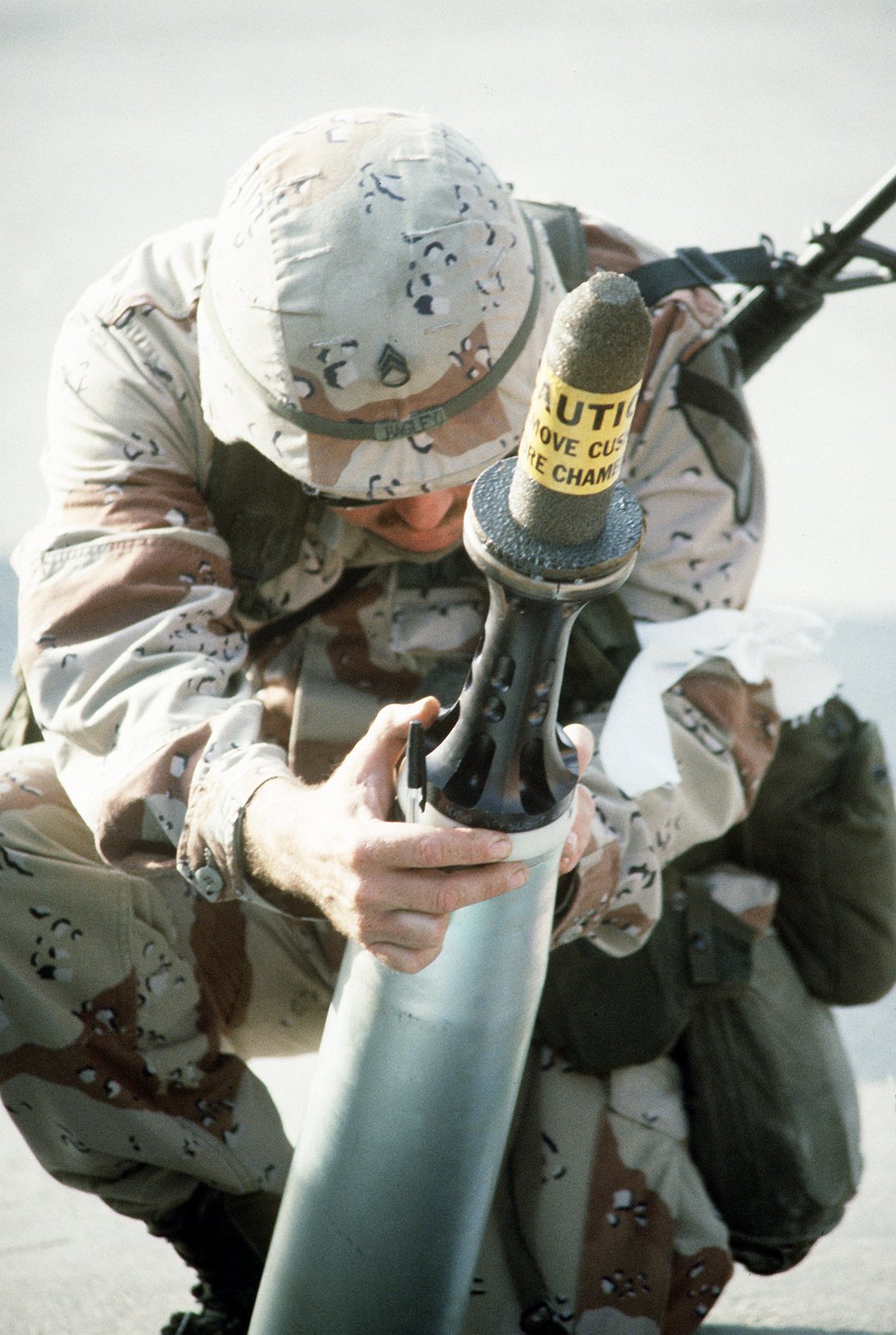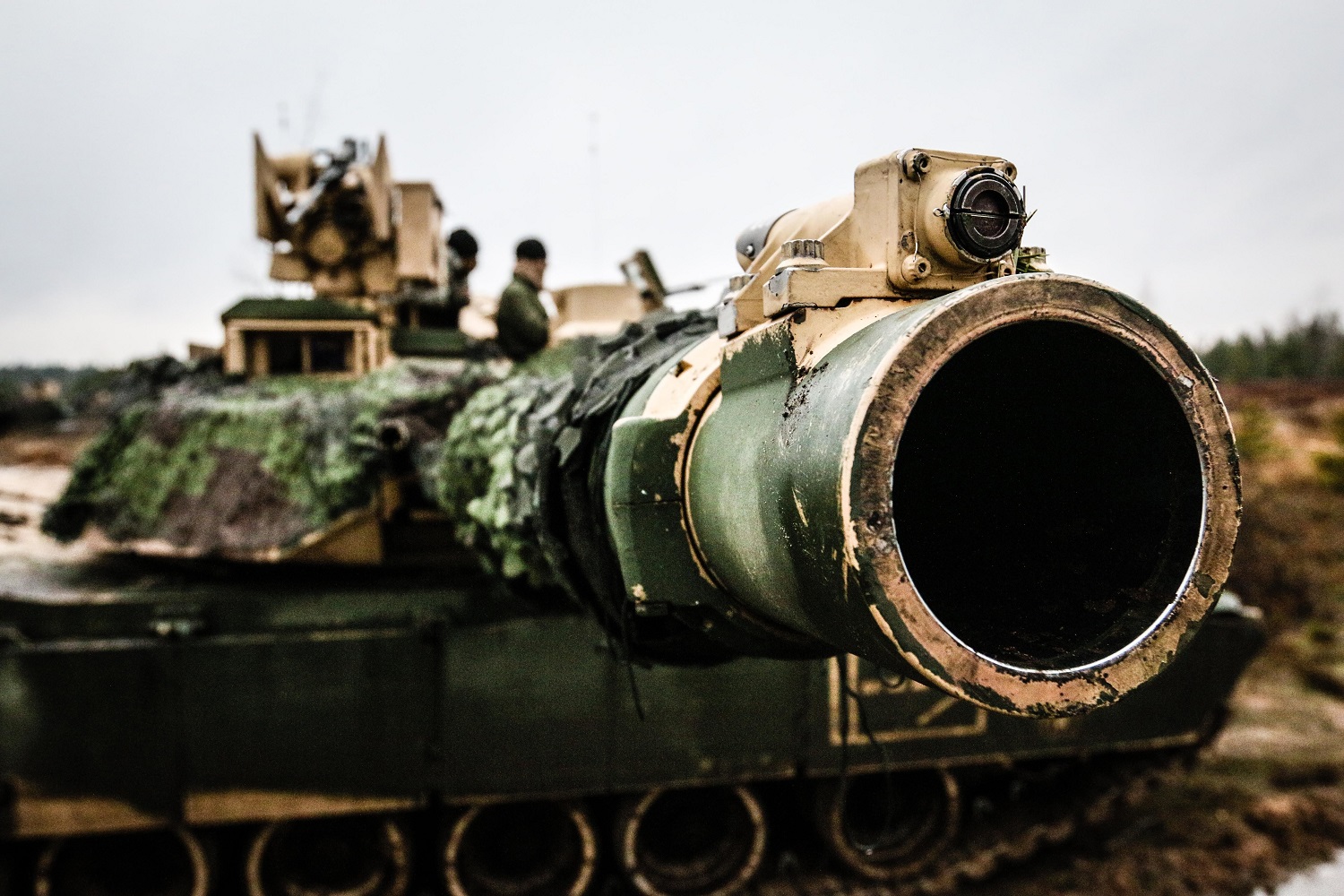Tank Sabot Round - Here's the thing to remember: Thus, while Russia may have a 125-millimeter diversionary round that threatens Western main tanks, only a handful of new T-14 tanks can use it. Optimistic claims that the 2A82 gun could be installed on many old T-90s and T-72s still seemed impossible to realize.
The Soviet Union's enormous tank fleet was the backbone of its power during the Cold War. However, the events of the Persian Gulf War of 1991 called its advantage. On February 26, 1991, nine M1 Abrams tanks and twelve Bradley Fighting Vehicle cavalry attacked an armored brigade of Iraqi T-72 tanks from the elite division of the Tavakalna Republican Guard. In twenty-three minutes of fire, the troops destroyed thirty-seven of the Soviet-designed T-72 without losing a vehicle.
Tank Sabot Round

These results are not just a result of US higher education. Iraqi tankers occasionally hit M1 tanks, but their shells failed to penetrate the frontal armor of the Abrams. Not a single M1 was destroyed by enemy fire in the war.
Tank Ammunition 105mm Series
Russian tank enthusiasts are quick to point out that the Soviet Union did not export to Iraq, but developed 125-millimeter armor-piercing sabot shells, some of which used solid tungsten or depleted uranium for increased penetration. After the collapse of the USSR, Russian engineers continued to develop better ammunition. However, the effective thickness of frontal armor on western tanks increases by about 50 percent.
Today, the T-72 remains Russia's main battle tank, supplemented by the turbine-engined T-80 and four hundred more advanced T-90s. All variants carry the 125 mm 2A46 smoothbore gun, which loads ammunition using a rotating "carousel" mechanism instead of a man-loader. In this video you can see the carousel in action.
Tanks use a variety of ammunition, including high-explosive (HE) fragmentation rounds for personnel and light vehicles, and high-explosive anti-tank (HEAT) rounds, which use a charge that detonates a stream of liquid metal on impact. goal. Since HEAT shells operate based on kinetic energy, they do not lose power at range. Russian tanks can also fire guided missiles through cannon tubes that use HEAT warheads. Although slower than projectiles, rockets are more accurate against very distant targets.
However, modern main battle tanks use composite and/or explosive reactive armor arrays, sometimes combined with active defense systems, which are very effective at defeating HEAT charges. Thus, the anti-tank munition of choice remains the Kinetic-Energy Armor-Piercing Find-Discarding Sabot (APFDS).
Tank Ammunition 120mm Series
As you can see in this video, the APFDS round consists of an arrow-shaped penetrating rod made of ultra-dense metal encased in an aluminum "sabot" that glows like a petal as it exits the barrel of the gun. Kinetic Penetrators lose energy at range, but are extremely difficult to defeat with anything but heavy armor.
Penetration can be increased by increasing the velocity of the projectile (usually by lengthening the gun barrel) or by increasing the diameter of the projectile (difficult because it can add weight), increasing the length of the penetrating rod. , or the density of the metal.
Currently, the Abrams, Leopard 2 and Challenger 2 are believed to have frontal armor equivalent to about eight hundred millimeters of rolled homogeneous armor. The best armor-piercing projectiles compatible with the 2A46M rifle in Russia are the 3BM59 Svinets-1 and 3BM60 Svinets-2, which are made of tungsten and depleted uranium. It is estimated to penetrate 650 to 750 millimeters of armor at a 60 degree slope at an average combat range of 2 kilometers (1.24 miles).

This still seems to leave Russian shells at a deficit against Western armor, but there is no hope for anyone: they can still penetrate the rear armor of a main battle tank at short range or in large numbers on the universal side. Purists say that better (or luckier) tank crews can still win, but Russian tankers remain a challenge, especially given the sights and fire control systems of western tanks.
I Made An Mini Apfsds Tank Round From A 5.56 Shell And A Metal Thumbtack That I Shaved Down
The warheads were announced as production-ready around 2002-2005, but evidence of mass production only emerged in 2016, hinting at the arthritic funding of the Russian defense program. One problem was that the Svinets had a 740 millimeter long penetration rod, while the T-72 and T-80 autobreaches could hold a maximum ammunition size of 640 millimeters. Thus, expandable 2А46М-5 and М-4 autoloaders should be installed in the upgraded tank.
Russian engineers are also developing a new 2A83 152-millimeter gun for the next-generation T-14 Armata tank, as well as an improved 125-millimeter gun called the 2A82 to upgrade the older T-72 and T. -90 tanks.
In 2003, three prototypes of the 2A82 rifle were produced and tested more than 1,200 times. Compared to the 120 mm gun on the German Leopard 2 tank, the gun exerts 20 percent more pressure on the projectile exiting the tube, resulting in increased speed, penetration and accuracy.
The 2A82 can use the new 3BM69 Vacuum-1 and 3BM-70 Vacuum-2 sabot projectiles (uranium- and tungsten-based) with an additional 900 mm penetration rod. It is said to be able to hit 15 megajoules of energy to penetrate 900-1000 millimeters of armor and travel 2 kilometers per second. If true, this would finally give Russia a tank projectile that could reliably penetrate western main tanks at medium range.
Beware The Power Of Muscle Memory
By 2010, Russian engineers had come to the conclusion that the 2A83 gun was not practical and decided to equip the Armata with the 2A82, although this change was not announced until several years later. Moscow also boasted that it would buy 2,100 Armatas by 2020. However, it is known that Russia will receive only more than 100 T-14s to date.
According to Russian defense blogger Alexei Khlopotov, the order for the 2A82 rifle means a small number of operational Armats. Initially, a total of thirteen production examples of the 2A82-M1 were purchased for pre-production T-14s. Another 24 were purchased in December 2017, making it possible to equip a full battalion of 36 T-14s.
The slow procurement of the Armata means that Russia's 2,000 T-72s and nearly 800 T-80s and T-90s have long service life ahead of them. Thus, in 2017, Russian defense media reported that Moscow plans to upgrade the T-90 tank with Armata technology, including the 2A82 cannon.

In 2019, the upgraded T-90M began testing, reportedly with the Kalina fire control system capable of killing hunters that can automatically track targets, improved explosive reactor armor and possibly a new active defense system. But the 2A82 gun with vacuum capability remains out of action.
X Post: The Effects Of Different Anti Tank Rounds.
In another article, Khloptov explained the fundamental problem: Russian engineers could not find a cost-effective way to load an autoloader capable of carrying nearly one meter of vacuum warheads into the narrow turrets of old Russian tanks.
Apparently, in the early 2000s, the Ombi plant learned to design a double-feed autoloader, in which longer sabot shells are stored in a separate horizontal mechanism. However, the new system requires the addition of a longer tank chassis and a seventh track wheel. The revised tower was abandoned in 2009, as this defeated the goal of saving costs by upgrading older vehicles.
A successful method is to carve out an 80 millimeter section on each side of the T-72 or T-90 tank turret to accommodate the larger diameter autoloader. The part was covered with additional armor on the outside and the modified firing mechanism proved to be able to retain the projectiles.
This modification can be used on T-72 test tanks and T-90 tanks equipped with 2A82 gun. However, Khlopotov explained:
The M1 Abrams Fires Depleted Uranium 'silver Bullet' Tank Rounds
"2A82 will not be on the upcoming T-90M MBT aircraft of the Russian army. Only because the Russian industrial sector cannot produce it. Khlopotov attributes this to the mismanagement of the Russian metallurgical industry.
Thus, while the Russians had a 125-millimeter diversion that threatened Western main tanks, only a few of the newer T-14s could use it. Optimistic claims that the 2A82 gun could be installed on many old T-90s and T-72s still seemed impossible to realize.
Sebastian Roblin holds a master's degree in conflict resolution from Georgetown University and is a university instructor for the Peace Corps in China. He also worked on training, editing, and resettling refugees in France and the United States. He currently writes on security and military history for War Is Not Fun. This article first appeared last year. This article requires additional citations for validation. Please help improve this article by adding links to reliable sources. Unattributed material may be challenged and removed. Find source: "Kinetic energy petrator" - news · newspaper · book · magazine |

A kinetic energy propellant (KEP), also known as a long rod propellant (LRP) and colloquially known as a crowbar, is a type of munition designed to penetrate vehicle armor using a flail-shaped, high-section projectile. Like bullets or kinetic energy weapons, this type of ammunition does not contain an explosive charge and uses pure kinetic energy to hit the target. Modern KEP munitions are usually of the Armored Fin Stabilization Sabot (APFSDS) type.
Egypt Abrams Tank Rounds Price Doubles To $201 Million
The first cannons fired kinetic munitions, initially consisting of heavy balls made of stone and later of metal. From the beginning, the goal was to combine high muzzle energy with projectile weight and stiffness
Sabot round for sale, sabot tank round, 105mm sabot round, 50 cal sabot round, sabot round hitting tank, 25mm sabot round, 50 sabot round, tank sabot round for sale, 120mm sabot round, m1a1 sabot round, sabot tank, sabot shell tank
0 Comments